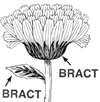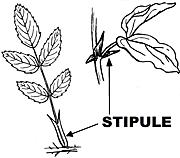Chinese Banyan Tree
Ficus microcarpa
Mulberry/Fig family (Moraceae)
Post-Cook introduction
This large ornamental tree of the fig planted in parks and gardens, is distinguished by its short trunk and very dense broad rounded by small dark green elliptical leaves with very small fig-like paired at base, by numerous roots about trunk or hanging hairlike from lower branches, and by the milky juice or white latex exuding from cuts.

©2015 Forest And Kim Starr
Leaves on leaf-stalks of 1⁄4–3⁄8 inch (6–10 ). Blades 1 1⁄2–3 inches (4–7.5 ) long and 5⁄8–1 1⁄2 inches (1.5–4 ) wide, short-pointed at both ends and often nearly diamond-shaped (rhomboidal), with and two main side veins from base along toothless margin, thick and leathery, upper surface dark green and slightly shiny, lower surface paler.
As flowers in this of figs are not visible, it appears that the trees have but no flowers. The figlike multiple (syconium), actually a corresponds to an enlarged overgrown flower stalk bearing on inner walls numerous tiny male and female flowers () and the small seeds, each technically a from a single flower. This species has small rounded fig-like paired and stalkless at leaf bases, about 5⁄16 inch (8 ) in diameter, with tiny pointed opening at and three pointed () 1⁄16 inch (1.5 ) long at base, green, turning yellow or reddish at maturity. Inside the are many tiny male and female flowers () and seeds. Fruiting probably through the year.
Sapwood is whitish and heartwood light brown. Wood is moderately heavy ( gr. 0.50), marked by parenchyma, with growth rings, soft and easy to work, very susceptible to attack by dry-wood termites.
This is a common species of the grown as an ornamental in lowlands of Hawaii. It has escaped from cultivation and can be found occasionally in the forest. Near homes, it seeds prolifically in drain pipes and gutters where small deposits of silt permit rooting. Actually, only 469 trees of this species are reported as having been planted in the Forest Reserves. It does, however, serve as a representative of the of which at least 33 other species have also been planted in the forests (about 60 have been introduced). The three most common in the forests are Port Jackson fig, Ficus rubiginosa Desf. (40,000 trees planted), Moreton Bay fig, Ficus macrophylla Desf. (36,000 trees), and roughleaf fig, Ficus nota Merr. (25,000 trees).
The dense crowns are frequently trimmed into rounded shapes. Rooting of cuttings is uncertain, but sometimes successful. Better results have been obtained by air layering or marcotting, in which a fairly large branch can be used. In some places this tree is considered objectionable because of its size, the litter of the numerous or because a thrips insect may deform the foliage and may irritate the eyes of persons beneath the tree.
Special area
Foster
Champion
Height 104 ft (31.7 ), c.b.h. 90.1 ft (27.5 ), spread 195 ft (59.4 ). Keaau Village, Puna, Hawaii (1968). This banyan with trunks and air roots grown together has the greatest trunk circumference and greatest spread of all Hawaiian champions.
Range
Native of India and Malaysia but widely planted in tropical regions.
Planted in southern Florida, Puerto Rico, and the Virgin Islands and elsewhere in tropical America for ornament and shade. It is a popular tree of plazas or town squares.
Other common names
Malayan banyan, Indialaurel fig; laurel de la India (Spanish); jaguey (Puerto Rico); fig (Virgin Islands); nunu (N. Marianas); lulk (Palau)
Botanical
Ficus nitida Thunb., not Blume. Formerly referred to as F. retusa L.




